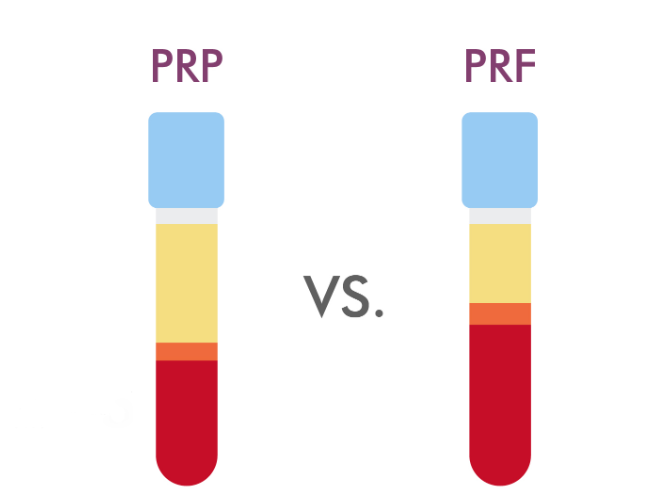Platelet-rich plasma (PRP) and platelet-rich fibrin (PRF) are becoming increasingly popular treatments in various fields, including hair restoration, dentistry, and aesthetics. Both PRP and PRF involve the use of concentrated platelets obtained from a patient’s own blood, but there are some key differences between the two treatments. In this article, we will explore the differences between PRP and PRF and their applications in various fields.
PRP and PRF: What’s the difference?
PRP and PRF are both autologous blood products, which means they are derived from a patient’s own blood. Both treatments involve drawing blood from the patient, processing it in a centrifuge to concentrate the platelets, and then re-injecting the platelet-rich product back into the patient’s body.
The main difference between PRP and PRF lies in the way the blood is processed. PRP is typically prepared by spinning the blood in a centrifuge at a high speed to separate the platelets from other blood components. The resulting platelet concentrate is then mixed with a small amount of anticoagulant to prevent it from clotting before it is injected back into the patient.
PRF, on the other hand, is prepared by spinning the blood at a lower speed, which allows for the separation of both the platelets and a dense fibrin matrix. The resulting PRF product is a thicker, more fibrin-rich product that does not require the addition of an anticoagulant.
Applications of PRP and PRF
PRP and PRF have numerous applications in various fields, including hair restoration, dentistry, and aesthetics.
PRP and PRF for Hair Restoration
Both PRP and PRF have been used for hair restoration with promising results. The growth factors in the platelets stimulate the hair follicles to grow, leading to thicker, healthier hair. While both treatments can be effective, some studies suggest that PRF may be more effective due to the presence of the fibrin matrix, which may provide a more favorable environment for hair growth.
PRP and PRF in Dentistry
PRP and PRF are also used in dentistry for procedures such as bone grafting and dental implant placement. The growth factors in the platelets help to promote tissue regeneration and accelerate the healing process.
PRP and PRF in Aesthetics
In the field of aesthetics, PRP and PRF are used in procedures such as microneedling and facial rejuvenation. The growth factors in the platelets stimulate collagen production, leading to smoother, firmer skin.
PRP vs PRF: Which is better?
The choice between PRP and PRF ultimately depends on the specific application and the preferences of the practitioner. While both treatments are effective and safe, PRF may offer some advantages over PRP due to the presence of the fibrin matrix. However, PRP is still the more widely studied and established treatment, with a larger body of research supporting its use.
PRP and PRF: Cost and Considerations
The cost of PRP and PRF treatments varies depending on the location, practitioner, and specific application. In general, PRF tends to be slightly more expensive than PRP due to the additional processing steps required.
It is important to note that PRP and PRF are autologous treatments, meaning they are derived from the patient’s own blood, which reduces the risk of allergic reactions or transmission of disease. However, as with any medical procedure, there are still some risks and potential side effects to consider, such as bruising, swelling, or infection.SO
So PRP and PRF are both valuable autologous treatments with numerous applications in various fields.








